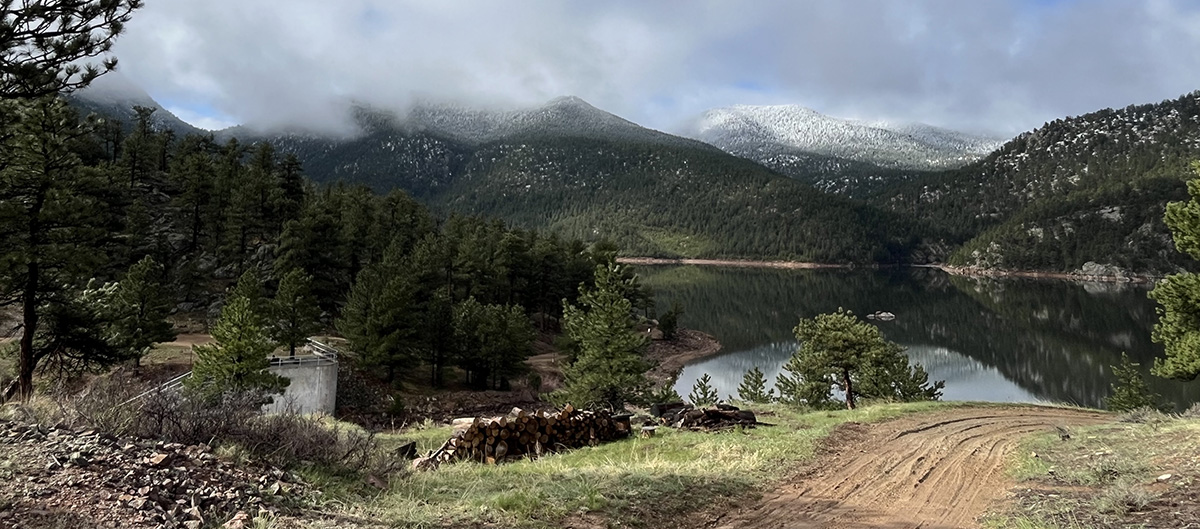Button Rock Forest Stewardship

Departments » Departments N-Z » Parks, Open Space and Trails » Directory of Parks and Trails » Button Rock Preserve
Forest Stewardship Plan
The City of Longmont established a Forest Stewardship Plan and program almost two decades ago. Since then, the City has carried out forest stewardship treatments of approximately 80 acres each year. To date, over 1,000 acres of forestland in Button Rock Preserve has been treated. This effort is greatly improving the overall health of this preserve area.
Historically, regular low-intensity surface fires started by lightning would keep the forest open and prevent fuels from building up that could put the forest at risk for a more severe fire. Over the past hundred years, however, these natural fires have not occurred, and the forest now needs to be actively managed through a variety of management prescriptions, such as thinning, to maintain the preserve in a healthy state. Forest thinning treatments are essential to keeping the Ponderosa pine forests of Button Rock Preserve healthy and for reducing the risk of a severe wildfire that could threaten the high-quality drinking water provided by the preserve.
Generally, the forest areas of Button Rock Preserve are dense with Douglas Fir and Ponderosa Pine trees on the north facing slopes with extremely tight foliage canopies. The dry, southern slopes are open meadow land with clumping of Juniper and Pines. The east and west aspects have a blend of dense and open timber stands.
With drought conditions in the last decade, many trees have shown the effects of stress, insect infestation and disease with large percentages of timber and brush mortality occurring. Abundant regeneration of trees and the current necessity for quick suppression of all wildfires within the area has continued the dense timber stands and thick understory throughout the preserve.
This situation is not unique to the City of Longmont watershed, as regional forest health is experiencing the same dynamic. Efforts to move forward with restoration by improving forest stand densities using selective thinning prescriptions, in conjunction with the natural processes, are occurring throughout the Front Range of Colorado.
Plan Update in 2017
When the City of Longmont first established a Forest Stewardship Plan and program in 2003, environmental consultants helped develop a management plan that would insure forest health and watershed protection.
A recent update to the Forest Stewardship Plan builds on and further refines the management prescriptions based on current forest management practices and science. An extensive forest inventory carried out by the Colorado State Forest Service in Button Rock Preserve during summer 2016 served as the foundation for the updated plan.
The resulting plan addresses current forest conditions through forest plot research modeling, vegetative inventories, wildfire fuels modeling, wildlife listings according to habitat suitability, and noxious weed management.
Recommendations from the management plan are to thin the trees throughout the watershed concentrating on disease and insect infestations, and to reduce stand densities. These actions will create a healthier and less competitive environment for the remaining trees. The potential for a catastrophic wildfire spreading across the treetops will also be reduced.
Varying degrees of timber thinning will occur within the watershed according to individual site conditions. Some locations will not be actively managed due to extreme slope and lack of access. Wildlife will continue to thrive throughout the watershed, as mature nesting trees and many areas of thick cover will remain.
This updated plan will guide the ongoing forest stewardship program in Button Rock Preserve for the next 10 to 20 years.
View the updated Forest Stewardship Plan >
Longmont’s updated Forest Stewardship Plan also contains information on and a plan for creek restoration and recovery in response to the September 2013 flood.
Contact
Email Pryce Hadley, Senior Watershed Ranger, Button Rock Preserve
Free viewers are required for some of the attached documents.
They can be downloaded by clicking on the icons below.
Button Rock Preserve now open as of Saturday, December 20th. There is one area with a downed pole that remains closed.





